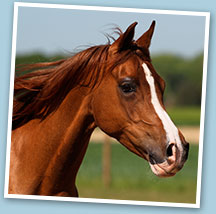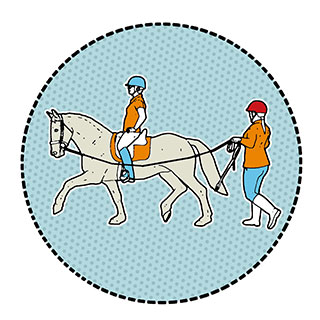
Horse Riding Tips
A prerequisite for riders of all levels is good rein control, and light and soft hands. Expert horse trainer Kelly Marks explains what having ‘good hands’ really means, and how you can achieve them.

Bit and bridle equipment puts
pressure on the horse’s mouth

Avoid gripping – hold the reins
with your thumb and forefinger

For balance, learn how to walk,
trot and canter without reins
Good hands are essential for the welfare of your horse, whether you’re a happy hacker or an Olympic medallist. When we refer to ‘good hands’ in horse riding, we mean the rider’s rein control, which should be still, steady and light, and their ability to communicate correctly with the horse.
Most bit and bridle equipment is designed to cause concentrated pressure on the horse’s lips, tongue, roof or bars of the mouth, nose and/or poll at any time the rider wishes. Although some riders may think this allows a sophisticated form of communication, with the wrong hands it can in fact cause confusion or even pain for the horse – often just from the rider’s loss of balance or lack of concentration.
Understanding your horse
All riders need to understand that they can unwittingly cause their horse discomfort. Learning to read your horse’s body language and identifying why she may be snatching at the reins, tossing her head, bracing her back or swishing her tail is important. A rider unfamiliar with the importance of having good hands often uses the reins for balance and so pulls on the horse’s mouth – the odd jab here and there builds up stress and tension in the horse, making her uncomfortable to ride. While bad hands will confuse and possibly hurt the horse, good hands will allow her jaw to relax so that consistently light and subtle contact from the rider acts as a clear, comfortable signal of what’s required.
Understanding your body
Just as a horse with a ‘good mouth’, which is relaxed, steady and responsive, will be soft through her whole body, good hands can only be obtained when the rider thinks about his or her whole body. It’s vital that you have complete balance without needing to hold on to anything. Once this is achieved, it’s important that your shoulders, elbow joints and wrists are relaxed and elastic. Avoid tensing and gripping your fists, and hold the reins with your thumb and forefinger, using the rest of your fingers to vibrate the reins for requests. Open your fingers to release pressure when your horse has done as you’ve asked.
Tips for achieving good hands
- Have a lunge lesson from a good school. Ensure you can walk, trot and canter without reins, moving your arms around while remaining in balance.
- Practise breathing out and relaxing when you ride. Tension will make you stiff, and your aids to the horse will be awkward. If you feel this happening, practise breathing out when you ride to release tension and allow your movements to be more fluid.
- Attach a strap from D ring to D ring and hold on while trotting. This will help you to understand that, if you want your hands to remain still, your elbows have to open and close as you ride. When trotting, you shouldn’t be moving up and down – instead your hips should move back and forth, which keeps your lower legs still as well as your hands.
- Imagine that you are holding a baby bird in each hand. Your grip must be light and gentle, so you don’t hurt them, but not so loose that you let them go!


